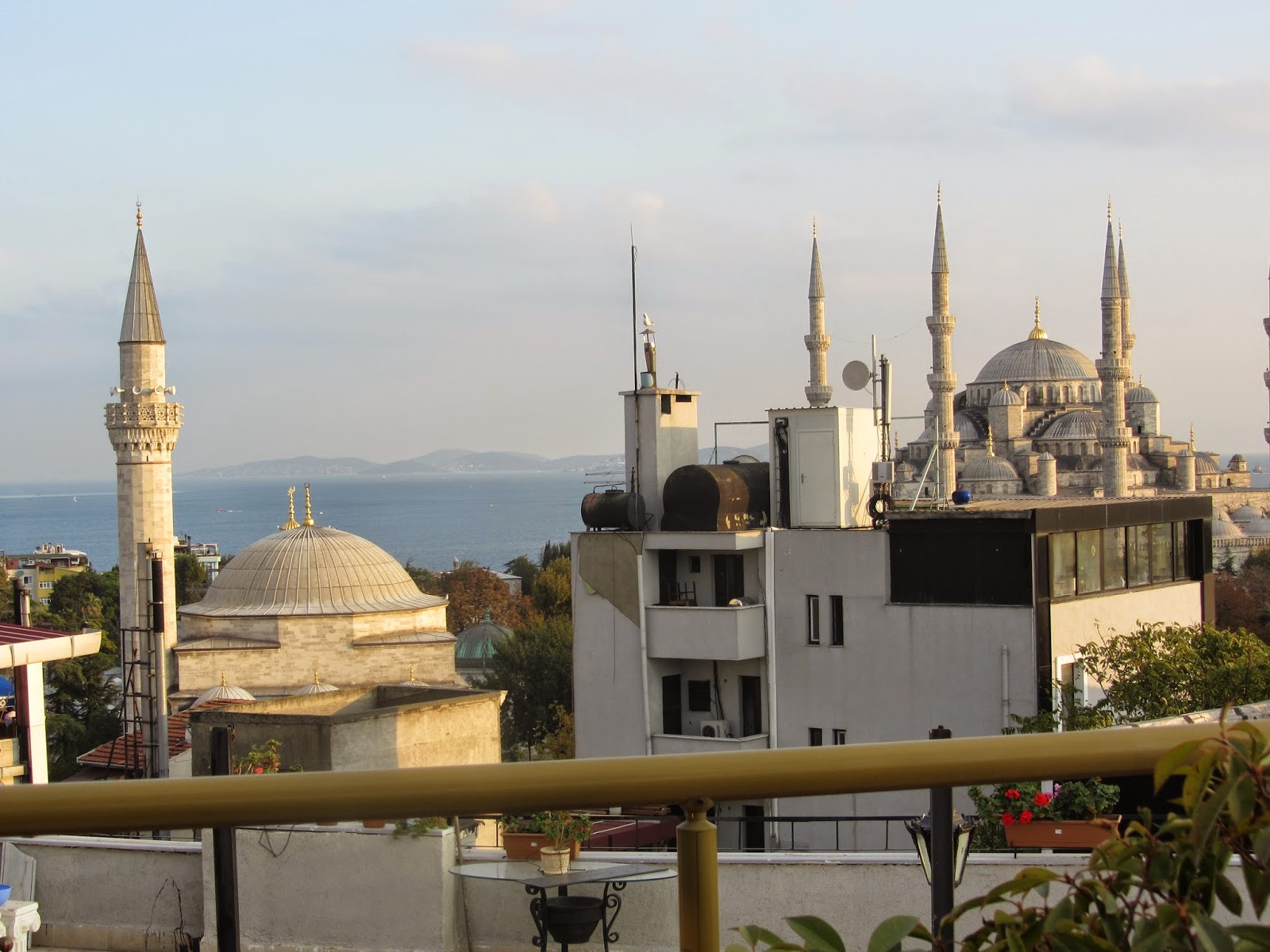ISTANBUL
We had a total of 3 days in Istanbul before and after our
Black Sea Cruise. We were also in
Istanbul for 1.5 days a couple of years ago.
This certainly doesn’t make me even close to an expert on this wonderful
tourist city but I will share some thoughts.
We were so impressed that Istanbul is now on my list of the top three
cities for tourists to visit (along with Buenos Aires and Barcelona).
Istanbul was first named Lygos, but in 667 B.C. when the
Greeks took over from the Tracians it became Byzantine. In 330 A.D. the Romans replaced the Greeks and
re-named it Constantinople. Of course
the Ottomans renamed the city Istanbul in 1453 and despite the best efforts of
the Ames Brothers 1950’s hit song the name has never reverted to
Constantinople. If you don’t know the
song to which I refer you are probably too young to bother reading my blog.
At 18 million Istanbul is the world’s 6th largest
city and it ranks 5th in number of tourist visits (almost double New
York). The city is divided by water into
three distinct areas. The original city
(referred to as the old European city) is on the north side of the Strait of
Bosphorus. This area is the main
business and shopping area and contains many of the tourist sites. It is separated by an inlet called the Golden
Horn from a newer (by a few 100 years) European area. However, the majority of the population lives
across the Strait on the Asia side. Most
of the people living in the Asia part of the city commute to the old city to
work. The look and feel of the Asian
side is somewhat different with wider streets, more greenery and newer
buildings. The three parts of the city
are connected by bridges and a tunnel and an unbelievable number of ferries
cross back and forth. Looking out my
stateroom window I counted 19 ferries at one time passing the ship.
In addition to visiting some of the main tourist sites such
as the Blue Mosque (one of 2000 in the city), the Dalmabahce Palace, the Grand
Bazaar (world’s largest enclosed shopping area), the spice market, etc. we
spent hours walking through the narrow streets of the old city. In fact, walking seems to be the best way to
get around. Shopping is everywhere and
prices are much lower than in Canada, even without the semi-obligatory
bartering system. Restaurants are almost
as pervasive but (with the exception of McDonald’s) are primarily Turkish. This is not a problem as everything Turkish
that we tasted was yummy.
A WORD ON CRUISING.
Those of you who read my blogs know that Betty and I have fallen in love
with cruising. We have been on different
ships on three different cruise lines and have liked them all. We generally choose by which ports of call
are included. And, there is nothing
better after a long day of touring than to get back on board and face an
exquisite meal accompanied by several glasses of good wine.
We generally choose a certain type of line which is
primarily for adults. Lots of really
old people (our age) on the ships but most seem to be having a great time. One of the entertainers in the evening show
noted that she started her singing career at the age of six by visiting nursing
homes. “Now”, she added, “I know longer
perform for old people.” I’m not certain
everyone in the audience was amused.
Every time we have cruised we were sorry to see the
excursion end.
A HINT FOR EXCHANGING CURRENCIES. Travelling means that everything is paid for
in some currency other than Canadian.
Credit cards are useful but not always accepted. Buying foreign currencies sometimes adds
excessive fees, particularly if you are dealing with a Canadian bank. Recently while travelling in New England I
tried an experiment. I pulled up to an
ATM and withdrew $400. U.S. from my CIBC account. I then borrowed $400. U.S. at the same ATM
using a Mastercard drawn on Chase Bank.
The fees for the withdrawal came to $13. while the fees and interest on
the loan came to only $5.77. Chase Bank
is the only bank we have found that doesn’t charge a percentage of the
exchange.
When in Istanbul we discovered that the best exchange was
trading Canadian cash for Turkish Lira at one of the hundreds of money
exchanges in all the shopping streets.
Never would have thought that I should have taken more Canadian cash
with me.









